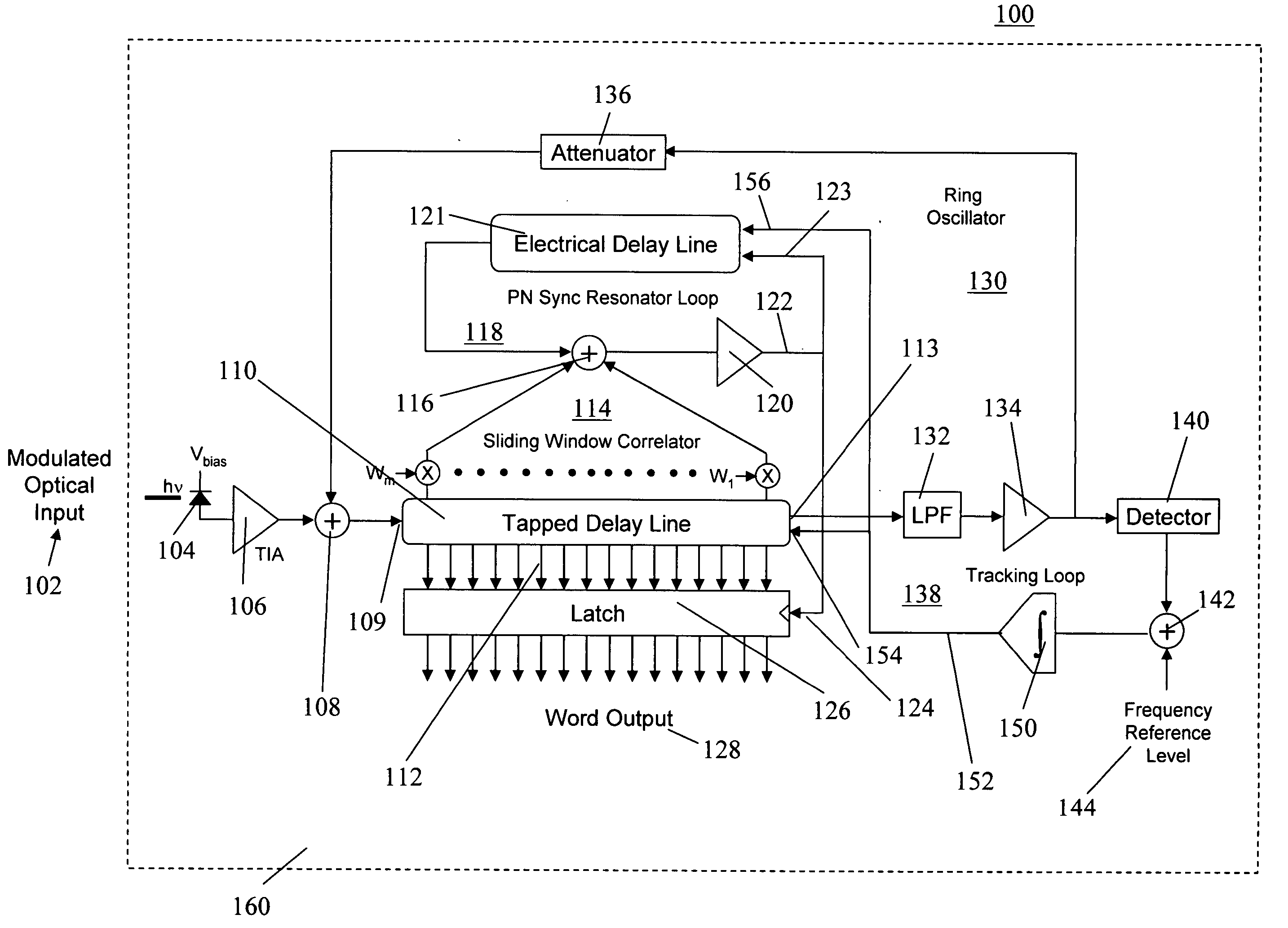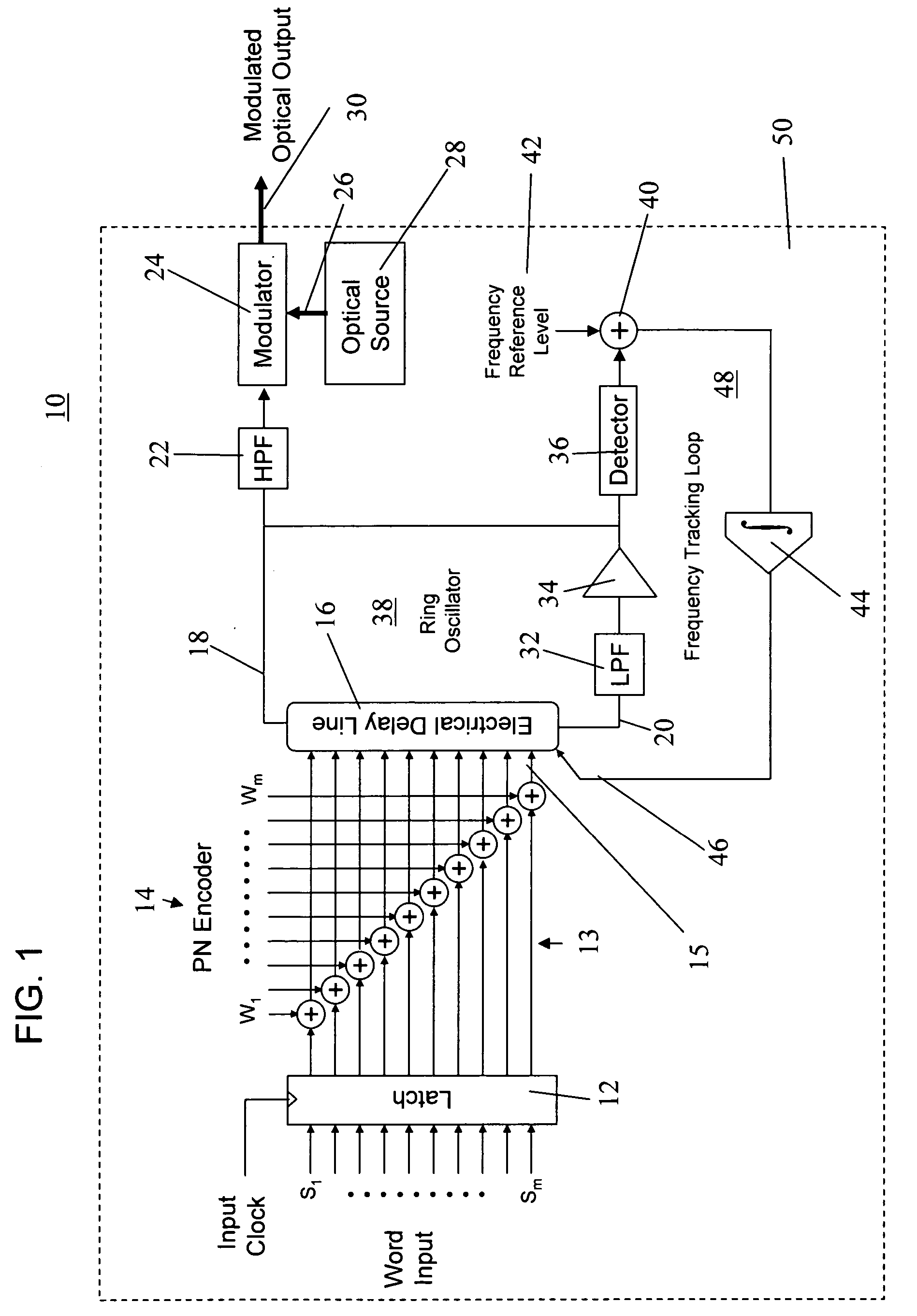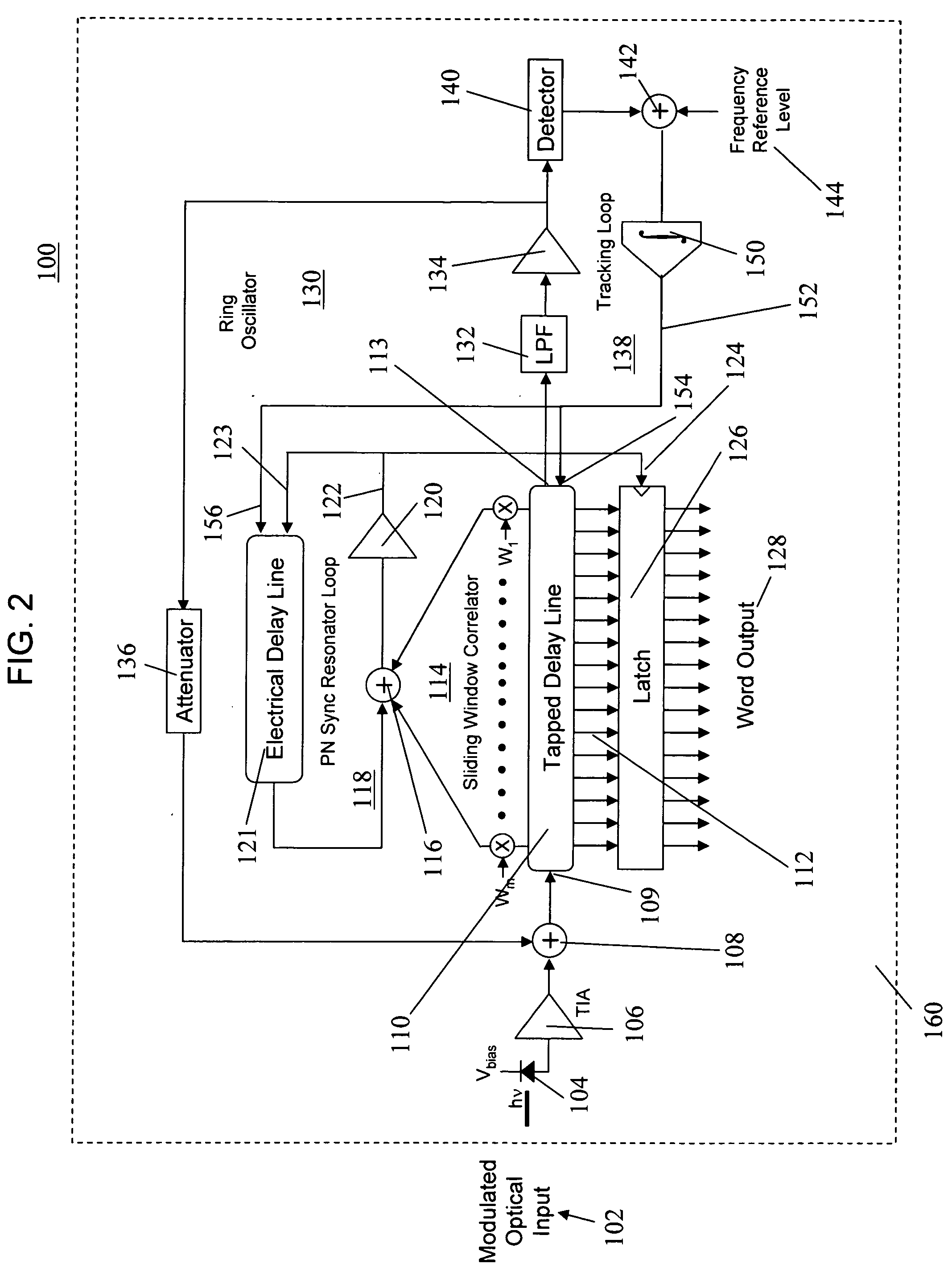Burst communications apparatus and method using tapped delay lines
a communication apparatus and delay line technology, applied in pulse techniques, dc level restoring means or bias distort correction, baseband system details, etc., can solve the problems of incompatible high-speed burst communication with long acquisition time associated with resolving both the frequency and phase uncertainty of transmitted waveforms, and the use of long preambles is not acceptable, so as to facilitate the acquisition of frequency and accelerate the acquisition
- Summary
- Abstract
- Description
- Claims
- Application Information
AI Technical Summary
Benefits of technology
Problems solved by technology
Method used
Image
Examples
Embodiment Construction
[0016] With reference to FIG. 1, a transmitter 10 is illustrated that is employed to generate an encoded serial data stream in accordance with the preferred embodiments of the present invention. The transmitter 10 receives parallel input data in the form of multiple bit words in an input latch 12. The number (m) of bits in each word can be arbitrarily chosen as desired but in one preferred embodiment is selected to be 16.
[0017] Each of the bits in the word is clocked from the input latch 12 into a corresponding one of (m) inputs 13 of a pseudorandom number (PN) encoder 14 that encodes the bits into symbols in such a manner that each word can be identified in a data stream as will be discussed in more detail in conjunction with FIGS. 2 and 3. More particularly, the PN encoder 14 adds or subtracts a fixed number to each bit's value. Thus, for a binary data stream having two different possible bit values, the encoding process provides four possible symbol values. As an example, if the...
PUM
 Login to View More
Login to View More Abstract
Description
Claims
Application Information
 Login to View More
Login to View More - R&D
- Intellectual Property
- Life Sciences
- Materials
- Tech Scout
- Unparalleled Data Quality
- Higher Quality Content
- 60% Fewer Hallucinations
Browse by: Latest US Patents, China's latest patents, Technical Efficacy Thesaurus, Application Domain, Technology Topic, Popular Technical Reports.
© 2025 PatSnap. All rights reserved.Legal|Privacy policy|Modern Slavery Act Transparency Statement|Sitemap|About US| Contact US: help@patsnap.com



